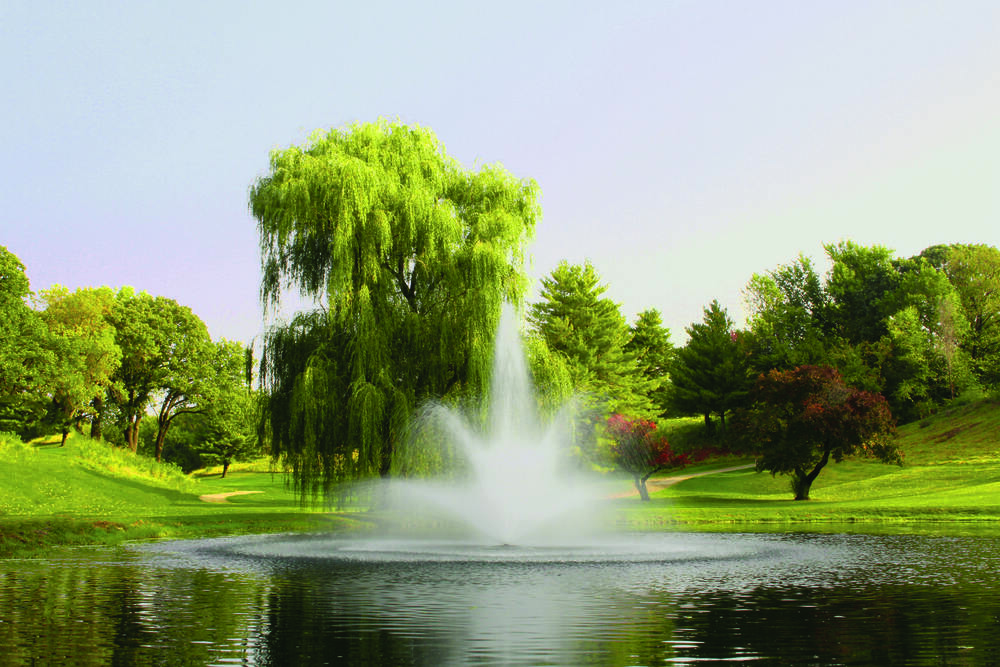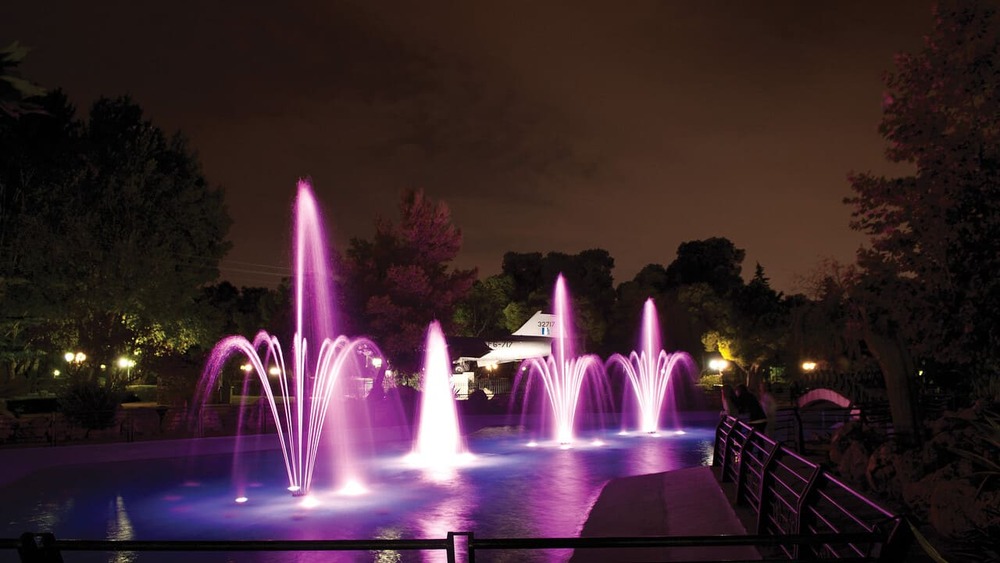In the world of landscaping design, aquatic spaces such as fountains, lakes, ponds, and lagoons provide a refreshing and ornamental relief to urban development. These water features not only add visual appeal but also create a soothing atmosphere that attracts visitors and encourages them to engage with the environment. Among the various types of water features, floating fountains stand out as an ideal addition to any lake, lagoon, pond, or river.
Floating fountains serve as a cornerstone meeting point in public spaces, hotels, resorts, parks, and even golf courses. They offer appealing visuals and soothing water shows that captivate visitors and invite them to relax and unwind. However, the benefits of floating fountains extend beyond their aesthetic qualities. These fountains also play a crucial role in maintaining the health and clarity of the water body they inhabit.
In this article, we will delve into the world of floating fountains, exploring their unique characteristics, design considerations, installation process, and the numerous benefits they bring to aquatic spaces.
Dive deeper with the eBook
Understanding Floating Fountains
What are floating fountains?
Floating fountains are water features that are designed to operate while “floating” on the surface of a water body. Unlike traditional fountains that are built on land, floating fountains are self-contained units that can be easily installed and relocated as needed. They consist of a floating platform that houses the pump, motor, and nozzle assembly, which work together to create the desired water display.
One of the key characteristics of floating fountains is their ability to provide both decorative and functional benefits. Floating fountains focus on creating visually stunning water displays, with various spray patterns and heights that can be customized to suit the aesthetic preferences of the space. On the other hand, floating fountains prioritize the oxygenation and circulation of the water, helping to maintain a healthy aquatic ecosystem.
Advantages of floating fountains
Floating fountains offer several advantages. Firstly, they provide a stunning aesthetic appeal, serving as a focal point and gathering area for visitors. The mesmerizing water displays created by floating fountains can transform an ordinary aquatic space into a captivating and inviting environment.
Floating fountains play a vital role in improving water quality through aeration. By constantly enriching the water with oxygen, they help prevent the growth of algae, reduce odors, regulate temperature, and maintain water clarity. This not only enhances the visual appeal of the water body but also supports the health and well-being of aquatic life. This practical benefit ensures that floating fountains contribute positively to the surrounding ecosystem.

Designing floating fountains for aquatic spaces
Assessing the aquatic space
Before designing a floating fountain, it is crucial to assess the aquatic space in which it will be installed. This involves determining the size and depth of the water body, as well as evaluating the surrounding landscape and architecture. Understanding the dimensions and characteristics of the space will help in selecting the appropriate size and type of floating fountain.
When assessing the size of the water body, consider factors such as the surface area, average depth, and any variations in depth throughout the space. This information will guide the selection of a fountain with the appropriate spray height and width to ensure optimal performance and visual impact.
Additionally, take into account the surrounding landscape and architecture. Consider the style, colors, and materials used in the adjacent structures and landscaping elements. This will help in choosing a floating fountain design that complements and enhances the overall aesthetic of the space.
Selecting the appropriate floating fountain
Once the aquatic space has been assessed, the next step is to select the appropriate floating fountain. This involves considering the size and scale of the fountain in relation to the water body, choosing the right spray pattern and water effects, and incorporating lighting for enhanced visual impact.
When selecting the size of the floating fountain, it is essential to strike a balance between visual impact and practicality. A fountain that is too small may get lost in a large water body, while an oversized fountain may overwhelm a smaller space. As a general rule, the fountain should be proportional to the size of the water body , typically covering about 1% to 5% of the surface area.
The spray pattern and water effects of the floating fountain should be chosen based on the desired aesthetic and the intended use of the space. For a more dramatic and eye-catching display, consider a fountain with multiple tiers and cascading effects. For a more subtle and soothing ambiance, opt for a fountain with a single, gentle spray pattern.
Incorporating lighting into the floating fountain design can greatly enhance its visual impact, especially during evening hours. LED lighting systems offer a wide range of color options and programmable sequences that can be synchronized with the water display. Consider the desired mood and atmosphere when selecting the lighting scheme for the fountain.
Additionally, explore the possibility of integrating unique features and technologies into the floating fountain design. For example, some fountains can be programmed to create choreographed water displays synchronized with music or light shows. Others may incorporate misting or fog effects to add an extra dimension to the visual experience.
Installation and Maintenance of Floating Fountains
Site preparation and installation process
Once the floating fountain design has been finalized, the next step is to prepare the site for installation. This involves ensuring that the water body is suitable for the fountain and that all necessary electrical and plumbing requirements are met.
The installation process typically involves anchoring the floating fountain to the bottom of the water body using a mooring system. This ensures that the fountain remains stable and in place, even in the presence of wind or water currents. The electrical and plumbing connections are then made, following all relevant safety regulations and codes.
Maintenance and upkeep
To ensure the longevity and optimal performance of a floating fountain, regular maintenance and upkeep are essential. This includes routine cleaning, inspection, and troubleshooting of any issues that may arise.
Cleaning the fountain involves removing any debris or algae buildup from the float, pump, and nozzles. This can be done using a soft-bristled brush and a mild cleaning solution. Regular cleaning helps maintain the fountain’s appearance and prevents clogging, which can affect its performance.
Monitoring the water quality and chemistry of the aquatic space is also crucial for the health of the fountain and the ecosystem it supports. Regular testing and adjustments to maintain proper pH levels, chlorine or other sanitizer concentrations, and mineral balance can prevent corrosion, scaling, and other issues that can affect the fountain’s performance.

The Benefits of Floating Fountains in Aquatic Spaces
Enhancing the overall aesthetics of the space
One of the primary benefits of incorporating a floating fountain into an aquatic space is the enhancement of its overall aesthetics . A well-designed and properly maintained floating fountain serves as a stunning focal point, drawing the eye and creating a sense of visual interest.
The mesmerizing water display created by a floating fountain can transform an otherwise ordinary water body into a captivating and inviting feature. The gentle sound of cascading water and the shimmering reflections on the surface add a soothing and relaxing ambiance to the surrounding environment.
Floating fountains can also be designed to complement and enhance the existing landscape and architecture. By selecting a fountain style, color scheme, and material that harmonize with the adjacent structures and plantings, the fountain becomes an integral part of the overall design, elevating the aesthetic appeal of the entire space.
Improving water quality and a refreshing effect
Beyond their aesthetic benefits, floating fountains play a vital role in improving water quality and supporting the health of aquatic ecosystems. The aeration and oxygenation provided by these fountains are essential for maintaining a balanced and thriving underwater environment.
The increased oxygen levels in the water support the growth and survival of beneficial aquatic organisms, such as fish, plants, and beneficial bacteria. These organisms, in turn, help to maintain the ecological balance of the water body by consuming excess nutrients, breaking down organic matter, and controlling algae growth, thereby maintaining water clarity and preventing the development of unpleasant odors.
Additionally, floating fountains can play a role in reducing the urban heat island effect. This is because water reduces the local temperature through the process of evaporation, which transports heat out of the urban areas.

Case Studies and Examples
Successful installations of floating fountains
From public parks and gardens to hotel and resort properties, floating fountains have been used to enhance and revitalize aquatic spaces around the world.
One notable example is the floating fountain installation at the Palace of Versailles in France. The iconic gardens of this historic site feature a stunning array of fountains, including several floating fountains that grace the surface of the Grand Canal. Other examples include the watershow installed on the river Tyne during the Newcastle Great Exhibition of the North.
Golf courses and country clubs have also embraced the benefits of floating fountains. The Pebble Beach Golf Links in California, for example, features a floating fountain in one of its iconic water hazards.
Conclusion about floating fountains
In conclusion, floating fountains offer a wealth of benefits and opportunities for enhancing aquatic spaces of all kinds. From their stunning visual appeal to their vital role in maintaining water quality and ecosystem health, these versatile water features have the power to transform ordinary water bodies into captivating and functional centerpieces.
The key to successful floating fountain installation lies in careful planning, design, and maintenance. By assessing the unique characteristics and requirements of each aquatic space, selecting the appropriate fountain type and size, and ensuring proper installation and upkeep, professionals can create floating fountain solutions that meet the highest standards of performance and aesthetics.
Ultimately, the incorporation of floating fountains into landscaping and architectural projects offers a powerful tool for creating engaging, immersive, and memorable experiences for visitors. By harnessing the beauty and functionality of these fountains, professionals can elevate the overall impact and success of their aquatic spaces, ensuring that they remain cherished and enduring.
